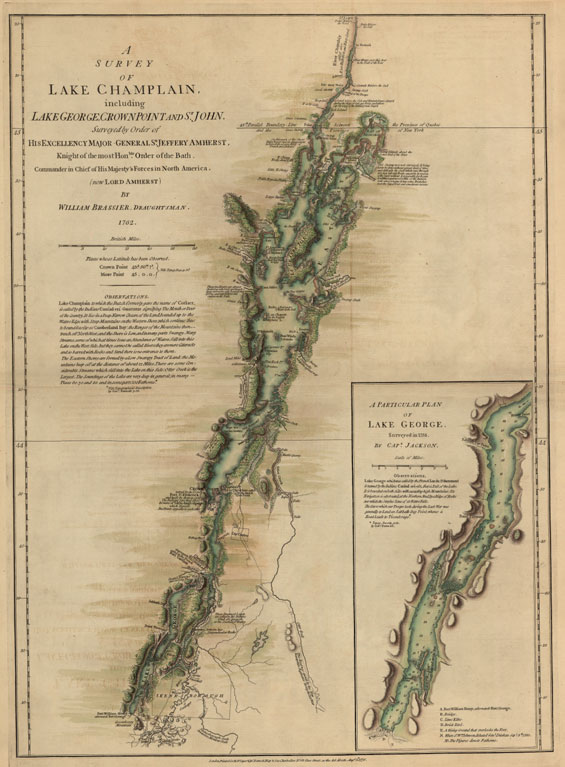|
|
 Because dense forests made overland travel in North America very difficult, Indians and Europeans used waterways whenever possible. Between the St. Lawrence River (Montreal) and the Hudson River (Albany), several smaller rivers and lakes enabled fur traders, missionaries, and soldiers to travel by canoes and bateaus. Lake Champlain, the longest of these waterways, provided a link between the two major rivers. Although the French dominated the northern end of the lake, the southern sector and Lake George remained in contention. In 1755, the governor of Canada ordered the construction of Fort Carillon (Ticonderoga) at the place where travelers had to move overland between Lake Champlain and Lake George. Sir William Johnson responded by erecting Fort William Henry at the southern tip of Lake George. |
|
|

|
|
“A Survey of Lake Champlain including Lake George, Crown Point, and St. John. Surveyed by Order of His Excellency Major-General Sr. Jeffery Amherst, Knight of the most Honble. Order of the Bath. Commander in Chief of his Majesty's Forces in North America (now Lord Amherst) by William Brassier, Draughtsman. 1762.” Title of inset map: Drawing by William
Brassier. |
